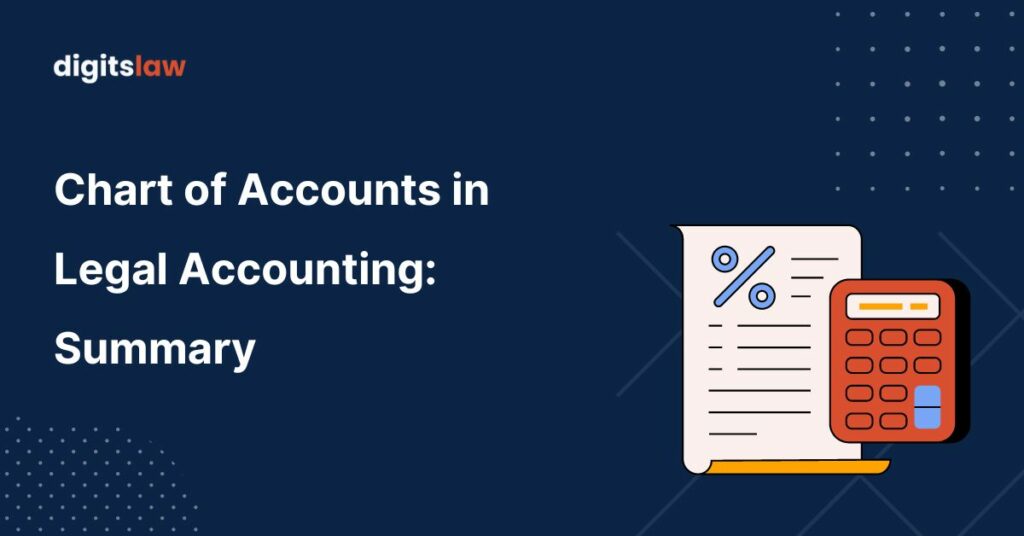An understanding of legal accounting is useful for attorneys in many contexts. First of all, many areas of law, such as securities law, insolvency law, tax law, and mergers and acquisitions, have financial effects. Lawyers who want to represent clients in such cases need to study accounting fundamentals and familiarize themselves with financial statements.
Secondly, lawyers and administrators who manage law firms need to make informed decisions about the allocation of resources within their firm and the development of strategies for growth and profitability. This is usually what is referred to as legal accounting.
Accounting, as a subject, is a vital aspect of any business, regardless of its size or industry. It involves the systematic recording, classification, and analysis of financial transactions to provide a clear picture of the financial health of a business. In the legal industry, this type of accounting is usually done with the help of accounting software for lawyers.
One of the most important parts of accounting is major accounts, which are categories that are used to classify financial transactions. In legal accounting, major accounts are important because they help law firms to track their financial performance and make better decisions.
In this article, we will explore the Chart of Accounts used in legal accounting, including assets, liabilities, equity, revenue, and expenses. We will define each account, explain its importance, and provide examples of how it is used in legal accounting.
First off, let’s start with a refresher on what accounting entails.
What is Accounting?
Accounting is the process of writing down, categorizing, summarizing, and making sense of a business or organization’s financial activities and events. It means keeping a complete and organized record of all money transactions and other business activities. Accounting’s main goal is to give business owners, and other interested parties useful, accurate, and reliable information about their finances.
Financial transactions are usually recorded using a standard set of methods and processes. The process includes making financial statements that show a business’s income, expenses, assets, liabilities, and equity, as well as a summary of its financial performance. The income statement, balance sheet, statement of cash flows, and statement of changes in ownership are all parts of a financial statement.
Why are Major Accounts Important?
Major accounts, also sometimes referred to as a chart of accounts, are important because they are the building blocks of a company’s financial statements and give important information about the company’s financial health and success. The most important accounts are generally put into five groups: assets, liabilities, equity, income, and expenses.
Image source: wallstreetmojo
Assets
Assets are resources owned by a company that has monetary value and can be used to generate revenue. They include tangible assets such as equipment, land, and buildings, as well as intangible assets such as patents and trademarks.
In the context of a law firm, assets can refer to any resources that the firm owns or controls and that are expected to bring financial benefits in the future. Examples of a law firm’s assets include cash, accounts receivable (money that clients owe the firm), furniture and equipment, computer software and hardware, office buildings, and investments.
They are important for several reasons. They can make money for the business.
They can also be utilized as loan collateral. For instance, If a law firm possesses a building, it may be able to use it as collateral for a loan to finance the purchase of new equipment or to expand its operations.
Additionally, assets can be utilized as a buffer against financial losses. For instance, if a law firm experiences a decline in revenue or an unexpected expense, it may be able to sell assets in order to generate cash and compensate for the losses. Likewise, if the law firm experiences a period of low cash flow, it may be able to use its assets as collateral to secure a line of credit or other form of short-term financing.
Asset tracking is essential for a business because it allows them to maintain an accurate inventory and ensure they have sufficient resources to operate.
Liabilities
Liabilities are an extensive set of accounts that show the debts and obligations a company owes to outside parties. This can include both short- and long-term obligations, such as loans, accounts payable, and accrued expenses.
Liabilities are important for law firms because they show what the company owes to other people, either now or in the future. They are usually categorized as either current or long-term in accounting, based on when they are due to be paid.
For law firms, the most common types of liabilities include accounts payable, accrued expenses, and payroll liabilities.
Accounts payable is the amount of money the law firm owes to its vendors and suppliers for goods and services received but not yet paid for. Accrued expenses are things like rent, utilities, and taxes that the law firm has already spent money on but hasn’t yet paid for. Payroll liabilities are how much the law firm owes its workers for salaries, wages, and benefits that they have earned but have not yet been paid.
Trust account liabilities are another important liability for law companies. Most of the time, law companies hold client funds like retainer fees, settlement payments, and court-awarded damages in trust. These funds are kept in a different trust account and are not thought of as the law firm’s property. The law firm has a fiduciary duty to make sure that these funds are handled and accounted for in the right way.
If a law company has too many liabilities, it might have trouble paying its bills or meeting its financial obligations. This could lead to financial trouble or even bankruptcy. On the other hand, if a law firm doesn’t have enough liabilities, it might miss out on chances to invest in the growth of the company or give its employees benefits.
Equity
Equity represents the residual interest in the assets of a business after deducting its liabilities. In relation to a law firm, “equities” usually mean the ownership stakes that the company’s partners or shareholders have in the business. Equity partners or shareholders usually own a piece of the business and have a right to a share of the firm’s profits and losses.
Image source: deskera
Equity ownership is something that law firms should think about for a variety of reasons. First, it can be a big reason for partners to put time and effort into the business and help it succeed. By giving partners an ownership stake in the business, they are more likely to be inspired to work hard and help the business grow and make money.
Second, equity ownership can help law firms hire and keep the best people. Offering equity ownership as part of a lawyer’s compensation package can be a way to get good lawyers to join the company and keep them there for a long time. This can be particularly important in a competitive legal market where talented lawyers are in high demand.
Third, equity ownership can affect how much money law firms make. Most of the time, the equity partners or shareholders share the firm’s gains and losses based on how much they own of the business. This means that how well the business does financially can have a direct effect on how much the equity partners or owners make. Because of this, equity ownership can affect how the company handles its money and what methods it uses to grow and make money.
Equity can be used for both operating and expansion financing. As a safety net against future losses or obligations, the company’s equity also protects the company’s debtors. Maintaining stakeholder trust and meeting reporting requirements in legal accounting requires thorough equity monitoring and reporting.
Revenue
A company’s revenue is the money it makes from its core operations. Sales proceeds, interest and rent collected, and other similar monies fall into this category. A key indicator of a company’s health, it reveals how much money is being made by the enterprise from its core operations.
This is usually the total amount of money earned by the firm from providing legal services to its clients such as from billable hours, contingency fees, and fixed fees.
Most law firms figure out how much money they make by multiplying the number of billable hours their lawyers work by their hourly rate or by adding up the fees for each legal service they offer.
A law firm’s income can be affected by a number of things, such as the types of legal services it offers, its size, its image, and the fees it charges for legal services.
It’s important to remember that income and profit are not the same thing. Profit is the amount of money left over after bills like salaries, rent, and other overhead costs are taken out. Even though income is an important sign of a law firm’s financial health, profit is a better indicator of how profitable and stable the firm will be in the long run.
Expenses
Expenses are the costs of running a business, such as salaries, rent, and electricity.
Expenses in a law firm refer to the costs incurred by the firm in carrying out its operations and providing legal services to clients. Some common expenses in a law firm include:
Salaries and benefits: This includes the salaries, wages, and benefits paid to lawyers, paralegals, administrative staff, and support staff.
Rent and utilities: Law firms need office space to carry out their operations, and they typically incur costs for rent, utilities, and maintenance of their office space.
Technology and equipment: Law firms need various types of technology and equipment to carry out their work, such as computers, printers, case management software for lawyers, billing software for lawyers, time-tracking software for lawyers, and communication tools. These items may need to be purchased or leased and maintained over time.
Supplies and materials: Law firms may need various types of supplies and materials to carry out their work, such as paper, pens, folders, and other office supplies.
Professional services: Law firms may need to hire outside professionals, such as accountants, consultants, or expert witnesses, to assist them in providing legal services to clients.
Marketing and advertising: Law firms may incur expenses related to marketing and advertising their services, such as creating a website, printing brochures, or sponsoring events.
Professional development: Lawyers and other legal professionals need to stay up-to-date with the latest legal developments and may need to attend conferences, seminars, or training programs to maintain their skills.
Legal research and databases: Law firms need access to various legal research tools and databases to carry out their work, such as LexisNexis, Westlaw, and Bloomberg Law. These services can be expensive and may require a subscription fee.
Insurance: Law firms need to protect themselves against various types of risks, such as malpractice claims, data breaches, and property damage. This may require purchasing insurance policies such as professional liability insurance, cyber liability insurance, and property insurance.
Travel and entertainment: Lawyers may need to travel to meet with clients or attend court hearings, which can result in travel expenses such as airfare, hotels, and meals. Law firms may also need to entertain clients or host events, which can result in expenses related to food, beverages, and event space.
Conclusion
The major accounts used in legal accounting are essential for businesses to track their financial health and make informed decisions.
By keeping accurate records of assets, liabilities, equity, revenue, and expenses, businesses can ensure they have the resources they need to operate and remain profitable. Accurate accounting is crucial for business success, and by understanding the major accounts, companies can take steps to improve their financial health and achieve their goals.







